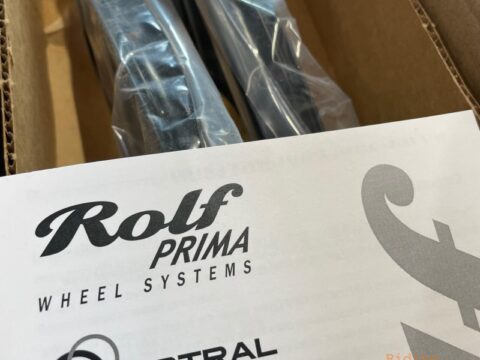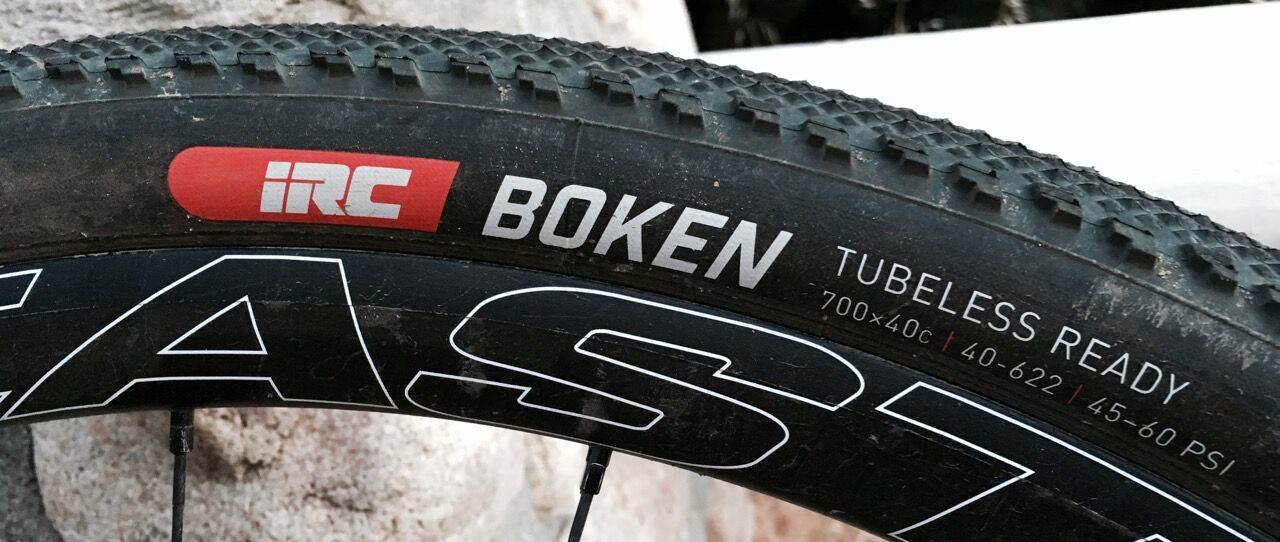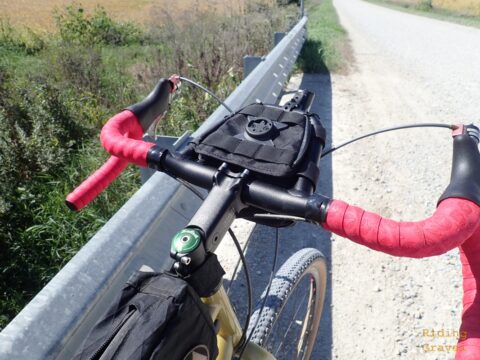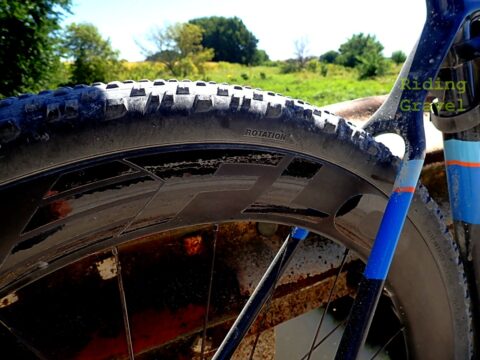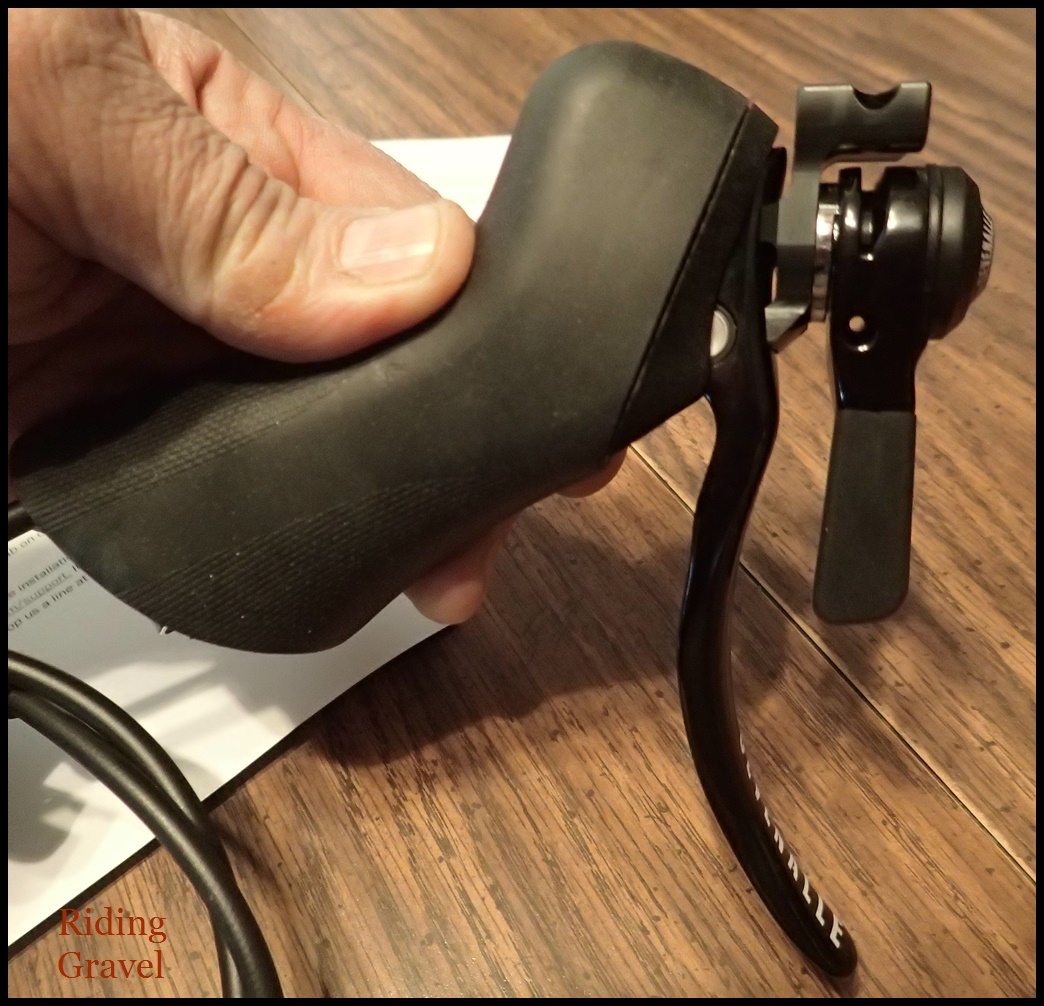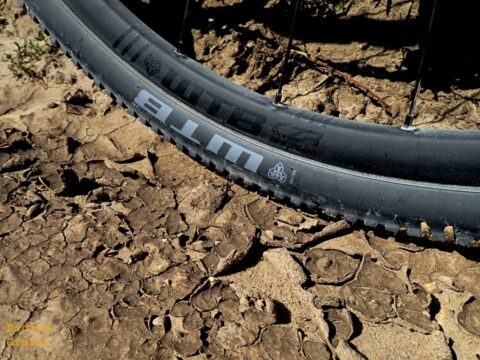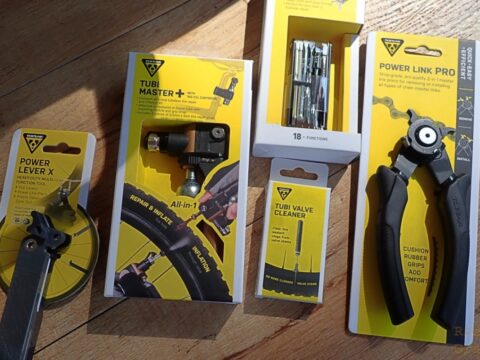Rolf Prima Sojourn Wheels: At The Finish – by Grannygear

I know what you are thinking. You are wondering what happened to the Checkpoint Post for these wheels. That is the mid-term report we typically give before we wrap things up like we are now. Well, let’s chalk up this bit of brevity to a broken clavicle. After the crash it was nearly three months before bumping along a gravel road sounded like a good idea. I still have not got back to the MTB, but I am about there. Healing slowly, this is.
So where I normally would have been putting miles on the Sojourns on some rugged So Cal dirt roads, I was spinning along on the road bike, asking myself “how does this feel today?” Sigh.

But I did get a chance to use them enough to sort out a couple of things, meaningful things, I think, and we will have to leave it at that as these are headed back to the mother ship. I was curious about a couple things. How much difference could I notice between these and the lighter, narrower, and more costly Hyalites that I thought were pretty stunning wheels to ride? And more importantly, what do you get with that wider internal rim besides more weight, and weight that is out where it begins to count more and more?
As I was just coming out of my self imposed cocoon of broken wing healing, I had a weekend on the calendar for two days of gravel riding with friends. Day one was a 35 mile organized gravel event at a social pace. The Everybody Loves Raymond ride is put on by the Fresno Cycling Club and offers various routes over different mileages. We did the lesser route to accommodate everyone in the group, but it was a great ride over remote paved and dirt roads. Excellent grassroots event. The next day we were on our own with a ride up onto an old railroad grade in the Western Sierras, getting up into timber and granite.
The weekend was only 54 miles and 4925’ of gain, but it was nice to reacquaint myself with the Sojourns again. I few more rides since then and a bit of experimenting allowed me to come to some conclusions about both my questions.
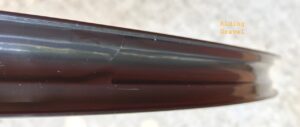
First of all, how do they compare to the Hyalites we reviewed earlier? The Hyalites are 4mms narrower and 1573g vs. 1741g. They are also less expensive than the Hyalites, about $500.00 less. You do step down in hub quality with the Sojourns, not that the XR2.4 subset is cheap stuff, mind you, but the XST White Industries based hub on the Hyalites is simply a premium product. Despite that, the Sojourns had a very nice step forward when pedaled with gusto. There has to be something to that paired spoke arrangement as both wheels I have sampled that use it were a pleasure to accelerate.
I also am sure that the more costly XST hubs have less drag when coasting/rolling then the XR2.4s do. You can feel it by hand when you turn the axles and freehub and see it when the wheels are spun in the stand. The XST hubs spin and spin and spin. There are two brands of hubs I have used that seem to out-roll anything else (not that I have ridden everything, you understand)…American Classic (now defunct) and White Industries. The XR4.2s feel nice, but not exceptional in that way.
Still I would think these would make great race wheels or even all-day non-race wheels. They stayed true, of course, but I did not push them as hard as I would have if I had been 100% health-wise.
So what about the width? Is it worth it? I think that depends on what you value. Let’s travel back in time. When 29″er wheels began to get wider, I got onto a set of American Classic Wide Lightnings. Those were exceptional wheels. Light, fast, stronger than you would expect, and at 29 or 30mms internal (not sure what they were for certain), they were 7-8 mm’s wider than anything I was using at the time (and often lighter). The designer, Bill Shook, intended those Wide Lightnings to be used by XC racers as the extra width allowed a typical 2.0 tire to be much poofier…like maybe even into a 2.2 size, but at least a 2.1. That was free volume. And more volume meant you could run lower pressures for more comfort and control, as well as more protection in rocks. You also could run the same tire at lower pressures as the wider rim better supported the tire. It was a huge win. Now a typical trail bike rim is what…38mms wide? I am a bit out of touch with that, but I think that is close.
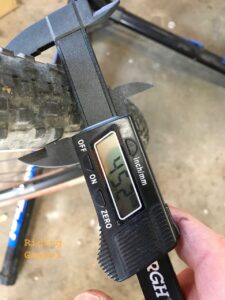
To see how this played out with the Wide Lightnings when I first got them, I set out with a more ‘normal’ MTB rim of 21mm’s internal width running a typical 2.2” 29″er tire. I selected a small loop of single track with tight corners and rocks. I began at 30psi in both tires and rode the loop at a quick but repeatable pace, each lap dropping 5psi out of the tires before I began another circuit. I ended up at around the low-20’s pressure-wise before I felt like the bike was wallowing around and below 20psi it was pretty much unrideable in fast corners.
Swapping to the Wide Lightnings, I repeated the test and got down to 18psi before I felt the bike mushing a bit, and even then it was not too bad…just vague. At 21psi it was amazing, adding comfort and traction with no real down sides unless I was in heavy rocks. Impressive.
So I did the same thing with the Sojourns. Running the WTB Resolutes in the 42c size, which were 45+mms on the Sojourns at 35psi, I began at 25psi and rode on pavement at moderate speeds, almost a slalom course with tight corners. I wanted the feel of the tire to be uncolored by any dirt or gravel. I dropped 5psi per lap. At 20psi it was still very stable. At 15psi it was pretty soft, but was still decent to corner on at moderate speeds. At 10psi it was like riding on a flat tire and I would not have wanted to trust that to support me.
Then I swapped to the test FSA AGX gravel wheels which are 21.5mm internal. That is only 3.5mms wider, so the difference is less than the Wide Lightnings brought to the table back in the day, so will it make a discernible difference on the much smaller gravel tires? Yes. The end result was that I began to feel 20psi as iffy and 15psi was like 10psi on the wider Sojourns. Almost. So I would say you get nearly a 5psi bonus in regards to how low you can go and still have reasonable tire support*.
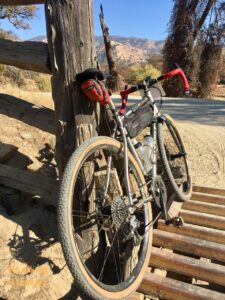
That is cool. But. There is a real difference between how and under what conditions MTB’s are ridden as compared to a gravel bike, at least one that sees mixed surface riding. On the MTBs, we were sold on the increased traction and control at lower pressures, but we did not give a fig about how that cornered on the road. And we also had much bigger tires on the MTBs so while lower tire pressures brought us closer to rock strikes, it was not anywhere near as fast as a 40c-45mm tire at 25psi will.
So, is it worth it to take the hit in weight, and possibly compromise your ability to run a 35mm tire, you know, for those ‘faster’ days? Some manufacturers, like Rolf-Prima, do not recommend a slimmer than 38mm tire on a rim this wide. In answer to that, I think if you are in dirt or gravel most all of the time and are running a bigger tire, like 38mm and above, and certainly for a 45mm tire size, the wider rim is a win. You could creep down tire pressures a few psi and still have adequate tire support, plus you would gain tire volume. On the FSA AGX wheels the 42mm Resolutes were 43.5mm wide. That is 2mms less than on the Sojourns.
One thing I noticed with the Hyalites, although it did not happen during the test period. I dropped one of the wheels when I was hanging it on a hook in the garage, so it took a dead drop from 6’ to the concrete floor, landing on one rim edge. Oh oh! That put a pretty good dent into the rim bead. Well, I got really good at getting that type of damage out of a rim brake wheel during the good old days, so off I went in search of a hammer, a piece of 2×4, and a drift. With care, you can tap the rim back into decent shape, using the 2×4 as a flat surface for the side of the rim to rest on. I have done this a lot over the years, not just for the benefit of restoring a decent braking surface, but also to restore a good tubeless bead interface on a disc brake wheel. I was surprised to find how easily the material in the rim moved back into shape, telling me that the aluminum alloy is a bit on the softer side or it is a thinner extrusion. However, I will note that it did not affect the trueness of the rim one bit. Editor’s Note: Rolf Prima tells us now that “the Sojourn is actually a different alloy than the original Hyalites“. Also, that the Sojourn wheel is a thicker extrusion and more resistant to abuse, than the Hyalites Grannygear mentions here.
Moral of that story? If I was a big or aggressive rider in heavy rocks, I might think about a more stout rim.
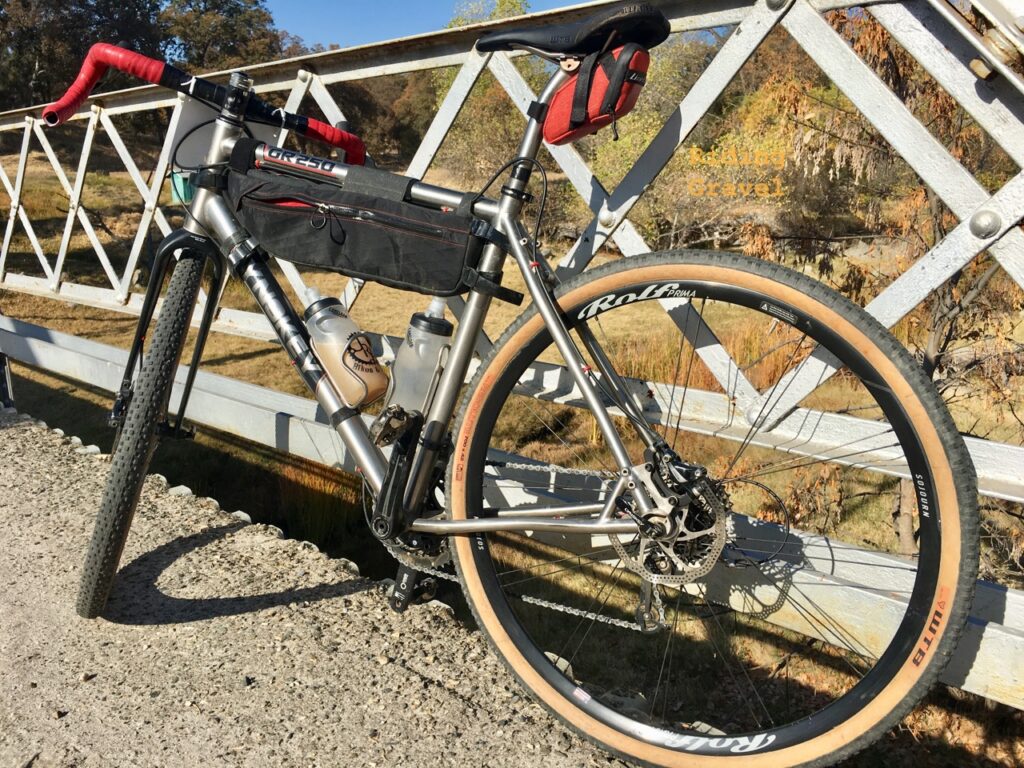
At The Finish: Once again I was impressed with how the unique spoking of the Rolf-Prima Sojourns gave the wheels a lively feel, the weight per cost is quite good, and the width buys you more tire volume and the potential for lower tire pressures without giving away handling. And for $699.99, that ain’t hay.
You can check out the Sojourn from Rolf Prima at their website here; https://rolfprima.com/products/sojourn
Notes: *While Grannygear has given specific tire pressures, please understand that this is what worked for him at his weight. Anyone else undertaking similar experiments with tire pressure should do so under advisement that your pressures will likely look different than Grannygear’s, and maybe very different, dependent upon your weight and riding style.
Rolf Prima sent over the Sojourn wheel set to Riding Gravel for test and review at no charge. We are not being paid, nor bribed, for this review and we will always strive to give our honest thoughts and views throughout.


